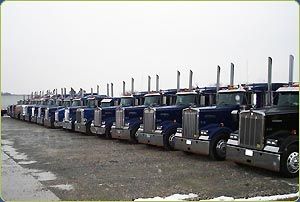 Having sufficiently had a chance to recover from a very busy and very engaging TUCON TIBCO 2010 user conference in Las Vegas, I wanted to pass along a few observations and notes from my track this year which was the Optimization and Visibility track. This was a very full 2 days of mostly CEP customer presentations with a smattering of industry IT analysts and TIBCO engineering presentations thrown in for good measure.
Having sufficiently had a chance to recover from a very busy and very engaging TUCON TIBCO 2010 user conference in Las Vegas, I wanted to pass along a few observations and notes from my track this year which was the Optimization and Visibility track. This was a very full 2 days of mostly CEP customer presentations with a smattering of industry IT analysts and TIBCO engineering presentations thrown in for good measure.
I’ll include this as a series and cover one presentation at a time.
First up is PepsiCo, co-presented with their implementation partner, Infosys.
The use case was how PepsiCo uses CEP software to provide more efficient and cost-effective usage of their company transportation fleet and other dedicated transportation partners.
In specific, they wanted to use their CEP software to provide advice on when to use their own transportation fleet, or use another carrier for consumer product shipments all over the U.S. Previously, Pepsi was using a manual, labor intensive process to manage the process.
In researching this project it was decided that they needed to be able to dynamically deploy their policies (or business rules), and automatically create decision trees to reflect the changing dynamics and costs of the transportation industry, they needed real time information on truck locations and cost valuations, and to capture metrics for performance measurement.
They also covered the architecture and design of their deployed system which was implemented with the Pepsi IT team and Infosys. He explained how they were able to develop simple and timed events to automate and manage the business rules with the TIBCO rule authoring tool, deploy customized and re-usable processes to extract data from a 3rd Party tool at regular intervals and provide enhanced performance by querying large amount of data as subsets and utilizing XSL and XPATH capabilities within the TIBCO software.
They also wanted to provide the ability to correlate events or create alerts based on events. He described it as “managing their company transportation events”
Example: If xx# errors occur in an hour, then send email to baseline support.
Example: If the Dedicated Fleet carrier has not reviewed their trip within 2 hours of offering, alert the Network Coordinator.
They also covered their business benefits– which included the ability to strategically identify the placement of dedicated and company fleet capacity, scale their fleet best practices nationally, and provide an agile software platform that gives them the flexibility to adapt to change via business rules that require minimum to no code change.
Key learnings from their project included his observation that they were glad they involved the business side early in the project in defining business rules, actions and data elements. PepsiCo also chose to build this CEP solution using iterative methodology principles to in order to keep the business side engaged throughout the project, specifically in the area of User Interface and Rule Authoring.
One of the speakers also covered ROI and payback– but we were sworn to secrecy.
In general, it was a well received presentation by the packed room.
But what I really liked about this particular session was that it presented by the guys who were directly involved and it was to Infosys’ credit that they let the Pepsi guys (and the project’s) success speak for itself.
CEP applications are often touted as to be so cutting edge and revolutionary, but it’s applications such as these “bread and butter” projects that seems to have made a difference in their everyday company operations and sometimes it’s those applications that turn out to be the most important of all.
More customer presentations later …





